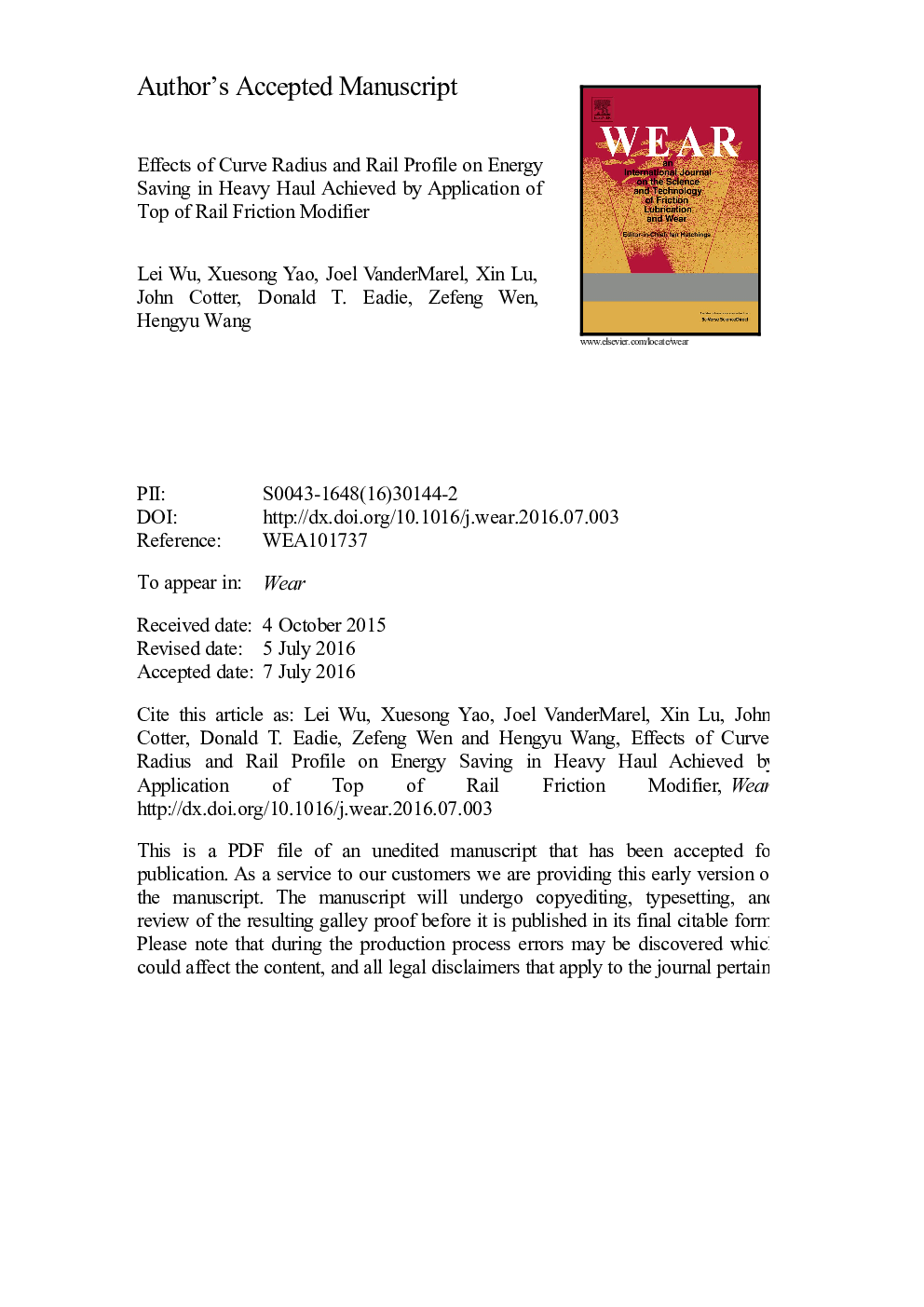| Article ID | Journal | Published Year | Pages | File Type |
|---|---|---|---|---|
| 4986853 | Wear | 2016 | 17 Pages |
Abstract
Energy saving achieved by application of top of rail (TOR) friction modifier (FM) in heavy haul are modeled, and the effects of curve radius and rail profile on the energy saving are discussed. A vehicle model for a C70 freight car running on the track of a heavy haul line was established. The coefficient of friction and Kalker coefficient were adjusted to simulate the creepage/force relationship when the TOR FM is applied to the wheel/rail interface. Friction work is used to represent the energy dissipation due to wheel/rail creepage. Energy saving achieved by applying TOR FM was calculated. The energy saving was studied under different operating conditions, and the effects of track curve radius and rail profile were studied. It is found that the curve radius of the track has significant influence on the energy saving. The energy saving was also found to behave differently on new and worn rails. The dramatic increase of lateral creepage on new rail when FM is applied and the decrease of the difference of wheel rolling radius when the rail profile changes from new to worn were found to be the main reasons that cause the difference.
Related Topics
Physical Sciences and Engineering
Chemical Engineering
Colloid and Surface Chemistry
Authors
Lei Wu, Xuesong Yao, Joel VanderMarel, Xin Lu, John Cotter, Donald T. Eadie, Zefeng Wen, Hengyu Wang,
